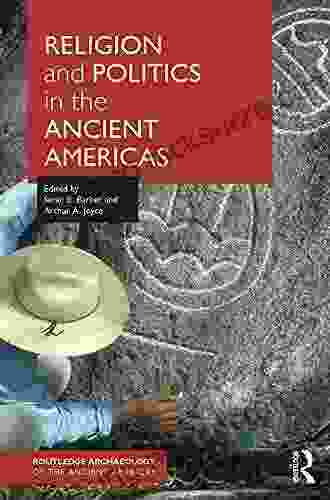Contested Landscapes in the Sino-Tibetan Borderlands: Studies on Ethnic Groups in a Geopolitical Mosaic

The Sino-Tibetan borderlands, a vast and rugged region spanning the Himalayas and the Tibetan Plateau, have been a crucible of cultural, ethnic, and political contestation for centuries. This region is home to a diverse array of ethnic groups, each with its own unique history, language, and way of life. The interplay between these groups, as well as the influence of external powers such as China and India, has shaped the region's complex and often volatile geopolitical landscape.
The Sino-Tibetan borderlands are inhabited by a rich tapestry of ethnic groups, including the Tibetan, Han Chinese, Hui, Monba, and Naxi. These groups have distinct cultural traditions, languages, and religious beliefs that have been shaped by centuries of isolation and interaction.
Tibetans: The Tibetans are the largest ethnic group in the region, with a population of over 6 million. They have their own unique language, written in a distinctive script, and a rich Buddhist culture. Tibetan society is traditionally based on a feudal system, with a hierarchy of nobles, monks, and peasants.
5 out of 5
| Language | : | English |
| File size | : | 3170 KB |
| Text-to-Speech | : | Enabled |
| Screen Reader | : | Supported |
| Enhanced typesetting | : | Enabled |
| Word Wise | : | Enabled |
| Print length | : | 349 pages |
Han Chinese: The Han Chinese are the largest ethnic group in China, and they have a significant presence in the Sino-Tibetan borderlands. They have migrated to the region over the centuries, bringing their own language, culture, and economic practices.
Hui: The Hui are a Muslim ethnic group that has lived in the borderlands for centuries. They are known for their trade and commerce, and they have played a significant role in the region's economic development.
Monba: The Monba are an indigenous group that lives in the eastern Himalayas. They have a unique culture and language that have been shaped by their isolation from the outside world.
Naxi: The Naxi are an ethnic group that lives in the southwestern borderlands. They are known for their distinctive pictographic script, known as Dongba, and their matrilineal social system.
The Sino-Tibetan borderlands have been a contested region throughout history. The Tibetan Empire, which flourished in the 7th and 8th centuries, controlled much of the region, but its power declined after the 9th century. In the 13th century, the Mongol Empire conquered Tibet, and it remained under Mongol rule until the 20th century.
In the 1950s, China invaded Tibet and established control over the region. Tibet's spiritual leader, the Dalai Lama, fled to India, where he established a government-in-exile. Since then, Tibet has been a source of tension between China and India, as well as the international community.
In addition to the geopolitical contestations between China and India, there are also internal tensions within the borderlands. The Tibetan people have a strong sense of national identity, and they have resisted Chinese rule. There have been numerous protests and uprisings in Tibet, including the 2008 Tibetan Unrest.
The Sino-Tibetan borderlands are rich in natural resources, including minerals, timber, and water. However, the region is also facing significant economic and environmental challenges.
Mining and other resource extraction activities have had a negative impact on the environment, including water pollution and deforestation. The region is also vulnerable to the effects of climate change, which is causing glaciers to melt and rivers to change course.
The Chinese government has invested heavily in infrastructure projects in the borderlands, including roads, railways, and dams. These projects have improved transportation and trade, but they have also raised concerns about their environmental impact and their potential to displace local communities.
The Sino-Tibetan borderlands are a region of great beauty, cultural diversity, and geopolitical complexity. The interplay between the region's diverse ethnic groups and the influence of external powers has shaped its history, its culture, and its current challenges. As the region continues to develop and change, it is essential to find ways to balance economic development with environmental protection and to respect the rights and aspirations of the people who live there.
5 out of 5
| Language | : | English |
| File size | : | 3170 KB |
| Text-to-Speech | : | Enabled |
| Screen Reader | : | Supported |
| Enhanced typesetting | : | Enabled |
| Word Wise | : | Enabled |
| Print length | : | 349 pages |
Do you want to contribute by writing guest posts on this blog?
Please contact us and send us a resume of previous articles that you have written.
 Fiction
Fiction Non Fiction
Non Fiction Romance
Romance Mystery
Mystery Thriller
Thriller SciFi
SciFi Fantasy
Fantasy Horror
Horror Biography
Biography Selfhelp
Selfhelp Business
Business History
History Classics
Classics Poetry
Poetry Childrens
Childrens Young Adult
Young Adult Educational
Educational Cooking
Cooking Travel
Travel Lifestyle
Lifestyle Spirituality
Spirituality Health
Health Fitness
Fitness Technology
Technology Science
Science Arts
Arts Crafts
Crafts DIY
DIY Gardening
Gardening Petcare
Petcare Kevin Paul
Kevin Paul Brennan Barnard
Brennan Barnard Kristine Setting Clark
Kristine Setting Clark Dan Blackburn
Dan Blackburn Patrick Lange
Patrick Lange Edyta Roszko
Edyta Roszko Mark Gregston
Mark Gregston Donna M Mertens
Donna M Mertens Manhattan Prep
Manhattan Prep Manuel De La Cruz
Manuel De La Cruz Josh Mulvihill
Josh Mulvihill Patricia Moore Pastides
Patricia Moore Pastides Diamond Wilson
Diamond Wilson Marcia Verduin
Marcia Verduin Dervla Murphy
Dervla Murphy Emma Lord
Emma Lord Elizabeth D Hutchison
Elizabeth D Hutchison Mark Brazil
Mark Brazil Kristen Riecke
Kristen Riecke Christy Jordan
Christy Jordan Michael Clarke
Michael Clarke Justin Hammond
Justin Hammond Claire Baker
Claire Baker Breanna Lam
Breanna Lam J Morgan Mcgrady
J Morgan Mcgrady Andrew G Marshall
Andrew G Marshall Tim R Wolf
Tim R Wolf Christopher Lakeman
Christopher Lakeman Edward Rosenfeld
Edward Rosenfeld Patrick Hunt
Patrick Hunt Erika Bornman
Erika Bornman Diane Duane
Diane Duane Sloane Mcclain
Sloane Mcclain Oscar Wegner
Oscar Wegner 50minutos Es
50minutos Es Eric I Karchmer
Eric I Karchmer David Kushner
David Kushner Tok Hui Yeap Rd Csp Ld
Tok Hui Yeap Rd Csp Ld Lewis Henry Morgan
Lewis Henry Morgan Adam Silvera
Adam Silvera Chris Lehto
Chris Lehto Andy Charalambous
Andy Charalambous Stewart Smith
Stewart Smith Maureen Johnson
Maureen Johnson Deanne Howell
Deanne Howell Jacquetta Hawkes
Jacquetta Hawkes Peter Cossins
Peter Cossins Gayle Jervis
Gayle Jervis P G Maxwell Stuart
P G Maxwell Stuart William A Dembski
William A Dembski John Iceland
John Iceland David Beaupre
David Beaupre Grant Thompson
Grant Thompson Nathalie Dupree
Nathalie Dupree Jozef Nauta
Jozef Nauta Skye Genaro
Skye Genaro 6th Edition Kindle Edition
6th Edition Kindle Edition George Pendle
George Pendle 5th Edition Kindle Edition
5th Edition Kindle Edition Broccoli Lion
Broccoli Lion Kennedy Achille
Kennedy Achille Lois Duncan
Lois Duncan Glenn N Levine
Glenn N Levine Theresa Cheung
Theresa Cheung Natasha Preston
Natasha Preston Michaela Stith
Michaela Stith Simon G Thompson
Simon G Thompson Herbert Feigl
Herbert Feigl Whit Honea
Whit Honea Subsequent Edition Kindle Edition
Subsequent Edition Kindle Edition Michael S Gazzaniga
Michael S Gazzaniga Anthony Arvanitakis
Anthony Arvanitakis Samantha Lovely
Samantha Lovely Dinokids Press
Dinokids Press Lareina Rule
Lareina Rule 1st Ed 2016 Edition Kindle Edition
1st Ed 2016 Edition Kindle Edition Andrea Wulf
Andrea Wulf Laurie Forest
Laurie Forest Brian Thompson
Brian Thompson Peter Wohlleben
Peter Wohlleben Andrew Weber
Andrew Weber J D Salinger
J D Salinger A R Bernard
A R Bernard Michael Geheran
Michael Geheran Jamaica Stevens
Jamaica Stevens Jd Brown
Jd Brown Robert Bauval
Robert Bauval Richard Bromfield
Richard Bromfield Mitch Rubman
Mitch Rubman Mohamed Elgendy
Mohamed Elgendy Lars Behnke
Lars Behnke Meik Wiking
Meik Wiking Joe Cuhaj
Joe Cuhaj Ben Egginton
Ben Egginton Eric Dominy
Eric Dominy Gershon Ben Keren
Gershon Ben Keren Tony Hernandez Pumarejo
Tony Hernandez Pumarejo Neal Bascomb
Neal Bascomb G I Gurdjieff
G I Gurdjieff Jordan Ifueko
Jordan Ifueko 3rd Edition Kindle Edition
3rd Edition Kindle Edition Jiichi Watanabe
Jiichi Watanabe Ellen Levitt
Ellen Levitt Jo Frost
Jo Frost Greg Midland
Greg Midland Debra Pascali Bonaro
Debra Pascali Bonaro Monica Sorrenson
Monica Sorrenson Joe Oliver
Joe Oliver Dr Brenda Stratton
Dr Brenda Stratton Dan Wingreen
Dan Wingreen L Ulloque
L Ulloque Janet Sasson Edgette
Janet Sasson Edgette Claire Sierra
Claire Sierra Bill Reif
Bill Reif Max Domi
Max Domi Dr Katayune Kaeni
Dr Katayune Kaeni Patricia Stevens
Patricia Stevens Mary H K Choi
Mary H K Choi Sherry Monahan
Sherry Monahan 7th Edition Kindle Edition
7th Edition Kindle Edition Lesli Richards
Lesli Richards James Diego Vigil
James Diego Vigil Gregory Collins
Gregory Collins Mei Fong
Mei Fong L Madison
L Madison Sarah Templeton
Sarah Templeton Ernest Shackleton
Ernest Shackleton Syougo Kinugasa
Syougo Kinugasa Justin Bower
Justin Bower Terrence Real
Terrence Real Rowan Ricardo Phillips
Rowan Ricardo Phillips Charles Seife
Charles Seife Ziemowit Wojciechowski
Ziemowit Wojciechowski Tami Lynn Kent
Tami Lynn Kent Rifujin Na Magonote
Rifujin Na Magonote Justine Brooks Froelker
Justine Brooks Froelker Kelly Skeen
Kelly Skeen Roselyn Teukolsky
Roselyn Teukolsky Alan Jacobs
Alan Jacobs Pamela Adams
Pamela Adams 4th Edition Kindle Edition With Audio Video
4th Edition Kindle Edition With Audio Video Theodore X O Connell
Theodore X O Connell Gary S Thorpe
Gary S Thorpe Claudio De Castro
Claudio De Castro Lj Rivers
Lj Rivers Liesbet Collaert
Liesbet Collaert Kyla Stone
Kyla Stone Chase Williams
Chase Williams Robert Ferguson
Robert Ferguson Bernard Rosner
Bernard Rosner Yan Shen
Yan Shen Natalie Smith
Natalie Smith Seymour Simon
Seymour Simon Jason Miller
Jason Miller Harry Middleton
Harry Middleton Kekla Magoon
Kekla Magoon Jon Dunn
Jon Dunn Gianni La Forza
Gianni La Forza Elaine Beaumont
Elaine Beaumont A C Davison
A C Davison Mimi Lemay
Mimi Lemay John Gribbin
John Gribbin Gregory A Boyd
Gregory A Boyd Andrew Shapland
Andrew Shapland 2nd Edition Kindle Edition
2nd Edition Kindle Edition Carl J Sindermann
Carl J Sindermann Olszewski Marie Erin
Olszewski Marie Erin Garrett Grolemund
Garrett Grolemund Thomas R Baechle
Thomas R Baechle Icon Digital Publishing
Icon Digital Publishing Katie J Trent
Katie J Trent Miranda Castro
Miranda Castro Marisha Pessl
Marisha Pessl George W E Nickelsburg
George W E Nickelsburg Evan Brashier
Evan Brashier Oliver Theobald
Oliver Theobald Theodor W Adorno
Theodor W Adorno Jonathan Ross
Jonathan Ross Dalai Lama
Dalai Lama Naomi Feil
Naomi Feil Deepak Chopra
Deepak Chopra Dustyn Roberts
Dustyn Roberts Elizabeth Bradfield
Elizabeth Bradfield Carol Stock Kranowitz
Carol Stock Kranowitz Susan E Cayleff
Susan E Cayleff Ulla Sarmiento
Ulla Sarmiento Jason Curtis
Jason Curtis Shelby Hailstone Law
Shelby Hailstone Law Martin Mobraten
Martin Mobraten Andre Norton
Andre Norton Kerry Fraser
Kerry Fraser Bertolt Brecht
Bertolt Brecht Amy Ogle
Amy Ogle Tom Pyszczynski
Tom Pyszczynski Steve Magness
Steve Magness Kate Spencer
Kate Spencer Brian Kent
Brian Kent Naomi Scott
Naomi Scott Andrew Collins
Andrew Collins Paul Martin
Paul Martin Freda Mcmanus
Freda Mcmanus Robert Peter Gale
Robert Peter Gale Fata Ariu Levi
Fata Ariu Levi 50minutes Com
50minutes Com Kelly Slater
Kelly Slater John A Yoegel
John A Yoegel Lenora Ucko
Lenora Ucko Patricia O Quinn
Patricia O Quinn Dominik Hartmann
Dominik Hartmann Louis Stanislaw
Louis Stanislaw Elizabeth Sims
Elizabeth Sims Aubrey Clayton
Aubrey Clayton Laura Bright
Laura Bright Geri Ann Galanti
Geri Ann Galanti Bobby Blair
Bobby Blair Eloise Jarvis Mcgraw
Eloise Jarvis Mcgraw Heather Rain Mazen Korbmacher
Heather Rain Mazen Korbmacher Rashad Jennings
Rashad Jennings Monte Burch
Monte Burch 8th Edition Kindle Edition
8th Edition Kindle Edition Sheryl Crow
Sheryl Crow Terence Grieder
Terence Grieder Leonardo Trasande
Leonardo Trasande Ellen Sue Turner
Ellen Sue Turner Brenda Dehaan
Brenda Dehaan Collins Gcse
Collins Gcse David Cheng
David Cheng Roger Gordon
Roger Gordon Barbara Klein
Barbara Klein Jean Clottes
Jean Clottes Jeffrey A Greene
Jeffrey A Greene Alden Jones
Alden Jones Wong Kiew Kit
Wong Kiew Kit Micah Goodman
Micah Goodman Lucas Whitecotton
Lucas Whitecotton William Regal
William Regal John Green
John Green Christoph Delp
Christoph Delp Elizabeth Wenk
Elizabeth Wenk Jamie Hand
Jamie Hand Cassandra Johnson
Cassandra Johnson Gail Craswell
Gail Craswell John Coleman
John Coleman 3rd Ed Edition Kindle Edition
3rd Ed Edition Kindle Edition Martha Menchaca
Martha Menchaca 1st English Ed Edition Kindle Edition
1st English Ed Edition Kindle Edition Bree Moore
Bree Moore Kerri Maniscalco
Kerri Maniscalco Jeremy Desilva
Jeremy Desilva Tony Horton
Tony Horton Stephen P Anderson
Stephen P Anderson Suzie Cooney
Suzie Cooney Robert Thurston
Robert Thurston Kate Usher
Kate Usher Jasmine Greene
Jasmine Greene Justin Doyle
Justin Doyle Michael W Ford
Michael W Ford 4th Edition Kindle Edition
4th Edition Kindle Edition Jack M Bloom
Jack M Bloom Greta Solomon
Greta Solomon Bruno Latour
Bruno Latour Leon Anderson
Leon Anderson Don Fink
Don Fink Patrick E Mcgovern
Patrick E Mcgovern Tasha Dunn
Tasha Dunn Melissa Cheyney
Melissa Cheyney Theris A Touhy
Theris A Touhy Porter Fox
Porter Fox Eli Boschetto
Eli Boschetto 1st Edition Kindle Edition
1st Edition Kindle Edition 2012th Edition Kindle Edition
2012th Edition Kindle Edition Tom Mchale
Tom Mchale Billie Jean King
Billie Jean King Buddy Martin
Buddy Martin Al Ford
Al Ford Gina Rae La Cerva
Gina Rae La Cerva Chris Froome
Chris Froome Terence N D Altroy
Terence N D Altroy Apsley Cherry Garrard
Apsley Cherry Garrard Nnedi Okorafor
Nnedi Okorafor Dave Gerr
Dave Gerr Jacqueeia Ferguson
Jacqueeia Ferguson Joseph Chilton Pearce
Joseph Chilton Pearce Robert Pondiscio
Robert Pondiscio Geoffrey West
Geoffrey West Bernard Cornwell
Bernard Cornwell Sadie Radinsky
Sadie Radinsky Thomas Wentworth Higginson
Thomas Wentworth Higginson Frank Sargeant
Frank Sargeant Louis Liebenberg
Louis Liebenberg John Collins
John Collins Chris Dietzel
Chris Dietzel Leigh Calvez
Leigh Calvez Howard Mudd
Howard Mudd Starley Talbott
Starley Talbott Robert A Johnson
Robert A Johnson Robert K Tyson
Robert K Tyson Pat Dorsey
Pat Dorsey Raymond Buckland
Raymond Buckland Nate G Hilger
Nate G Hilger Aly Madhavji
Aly Madhavji Ricki E Kantrowitz
Ricki E Kantrowitz Nikki Grimes
Nikki Grimes Patrick Viafore
Patrick Viafore Betty Crocker
Betty Crocker Leonard Pellman
Leonard Pellman Joe Chilson
Joe Chilson Jenifer Fox
Jenifer Fox Alec Crawford
Alec Crawford Leslie Leyland Fields
Leslie Leyland Fields Bookrags Com
Bookrags Com David Lloyd Kilmer
David Lloyd Kilmer Marty Bartholomew
Marty Bartholomew Dr Danny Penman
Dr Danny Penman Christa Orecchio
Christa Orecchio Karl Morris
Karl Morris Michael Alvear
Michael Alvear Lee Smolin
Lee Smolin Barnett Rich
Barnett Rich Iris Bohnet
Iris Bohnet Miko Flohr
Miko Flohr Amy Chua
Amy Chua Robert Venditti
Robert Venditti Kenny Casanova
Kenny Casanova Clint Malarchuk
Clint Malarchuk Janetti Marotta
Janetti Marotta Peter Dewhurst
Peter Dewhurst Eva Feder Kittay
Eva Feder Kittay Bryan Smith
Bryan Smith Jim Burns
Jim Burns Kristi K Hoffman
Kristi K Hoffman Duy Tran
Duy Tran Mauricio Cabrini
Mauricio Cabrini Steve Garnett
Steve Garnett Temple Grandin
Temple Grandin Michael Romano
Michael Romano Sandra Mizumoto Posey
Sandra Mizumoto Posey Margaret Littman
Margaret Littman Patricia S Potter Efron
Patricia S Potter Efron Tom Lyons
Tom Lyons 2005th Edition Kindle Edition
2005th Edition Kindle Edition Sam Irwin
Sam Irwin Nadav Snir
Nadav Snir Chris I Naylor
Chris I Naylor Mike Tyson
Mike Tyson Linda A Roussel
Linda A Roussel John Gookin
John Gookin Allan Mundsack
Allan Mundsack Sam Goulden
Sam Goulden Muata Ashby
Muata Ashby Heather Demetrios
Heather Demetrios J Michael Leger
J Michael Leger Brooklyn James
Brooklyn James Daphne Adler
Daphne Adler Emma Dalton
Emma Dalton James Mcnicholas
James Mcnicholas A Christine Harris
A Christine Harris Robert S Mueller
Robert S Mueller Cindy Kennedy
Cindy Kennedy Juno Dawson
Juno Dawson Filipe Masetti Leite
Filipe Masetti Leite Jay Cassell
Jay Cassell Mark Hatmaker
Mark Hatmaker Jong Chul Ye
Jong Chul Ye Bob Welch
Bob Welch Gregory J Privitera
Gregory J Privitera Nathan Jendrick
Nathan Jendrick Jeff Gill
Jeff Gill L S Boos
L S Boos Nancy Keene
Nancy Keene Alice Ginott
Alice Ginott A C Grayling
A C Grayling Edward Frenkel
Edward Frenkel John Hands
John Hands Joseph E Garland
Joseph E Garland Rick Gurnsey
Rick Gurnsey Hong Chen
Hong Chen Richard Ania
Richard Ania Karen Myers
Karen Myers Russell Miller
Russell Miller Steven D Levitt
Steven D Levitt Keith Siragusa
Keith Siragusa E Bruce Goldstein
E Bruce Goldstein Robert Mcentarffer
Robert Mcentarffer Heather Job
Heather Job Riddleland
Riddleland Susan Walker
Susan Walker Paul Johnson
Paul Johnson Alessa Ellefson
Alessa Ellefson Debra Barnes
Debra Barnes Vibrant Publishers
Vibrant Publishers Stefan Hofer
Stefan Hofer Lin Pardey
Lin Pardey Bruce Watson
Bruce Watson Jessica Shortall
Jessica Shortall Katie M John
Katie M John Paul Deepan
Paul Deepan Christopher Mcdougall
Christopher Mcdougall Z Justin Ren
Z Justin Ren 006 Edition Kindle Edition
006 Edition Kindle Edition Richard Adams
Richard Adams Marie Louise Von Franz
Marie Louise Von Franz Cynthia Bourgeault
Cynthia Bourgeault A Digger Stolz
A Digger Stolz Jillian Dodd
Jillian Dodd Shonna Slayton
Shonna Slayton Mark V Wiley
Mark V Wiley Tracy Gharbo
Tracy Gharbo Tyler Vanderweele
Tyler Vanderweele James D Long
James D Long John Kreiter
John Kreiter Emily A Duncan
Emily A Duncan Jay Wilkinson
Jay Wilkinson Jasper Godwin Ridley
Jasper Godwin Ridley Josh Elster
Josh Elster David Simkins
David Simkins Caroline Porter Thomas
Caroline Porter Thomas Prerna Lal
Prerna Lal Eric Haseltine
Eric Haseltine Andrew Maraniss
Andrew Maraniss Steve Kantner
Steve Kantner Chris Stewart
Chris Stewart Dan Falk
Dan Falk Bonnie Scott
Bonnie Scott Nick Winkelman
Nick Winkelman Raymond H Thompson
Raymond H Thompson
Light bulbAdvertise smarter! Our strategic ad space ensures maximum exposure. Reserve your spot today!

 Ernest ClineReligion and Politics in the Ancient Americas: Routledge Archaeology of the...
Ernest ClineReligion and Politics in the Ancient Americas: Routledge Archaeology of the... Cormac McCarthyFollow ·17.3k
Cormac McCarthyFollow ·17.3k Joshua ReedFollow ·19.6k
Joshua ReedFollow ·19.6k Douglas FosterFollow ·11.7k
Douglas FosterFollow ·11.7k Arthur C. ClarkeFollow ·13.6k
Arthur C. ClarkeFollow ·13.6k Jack PowellFollow ·6.4k
Jack PowellFollow ·6.4k Mark TwainFollow ·18.3k
Mark TwainFollow ·18.3k Jon ReedFollow ·18.7k
Jon ReedFollow ·18.7k Ryūnosuke AkutagawaFollow ·6.2k
Ryūnosuke AkutagawaFollow ·6.2k

 Finn Cox
Finn CoxA Comprehensive Guide for Budding Inventors and Backyard...
For those with a restless mind and a...

 Forrest Reed
Forrest ReedThe Ultimate Shopper's Guide to Purchasing Weight Lifting...
Are you looking...

 Dillon Hayes
Dillon HayesThe Chemical Choir: Unveiling the Enchanting Symphony of...
In the enigmatic realm of science, where...

 Ryūnosuke Akutagawa
Ryūnosuke AkutagawaStumbling Thru: Hike Your Own Hike
In the realm of outdoor adventures,...

 Terry Pratchett
Terry PratchettUnlock Your Math Skills: A Comprehensive Guide to Chenier...
Math plays a vital role in...
5 out of 5
| Language | : | English |
| File size | : | 3170 KB |
| Text-to-Speech | : | Enabled |
| Screen Reader | : | Supported |
| Enhanced typesetting | : | Enabled |
| Word Wise | : | Enabled |
| Print length | : | 349 pages |












